Last Updated on April 4, 2024 by Cathy
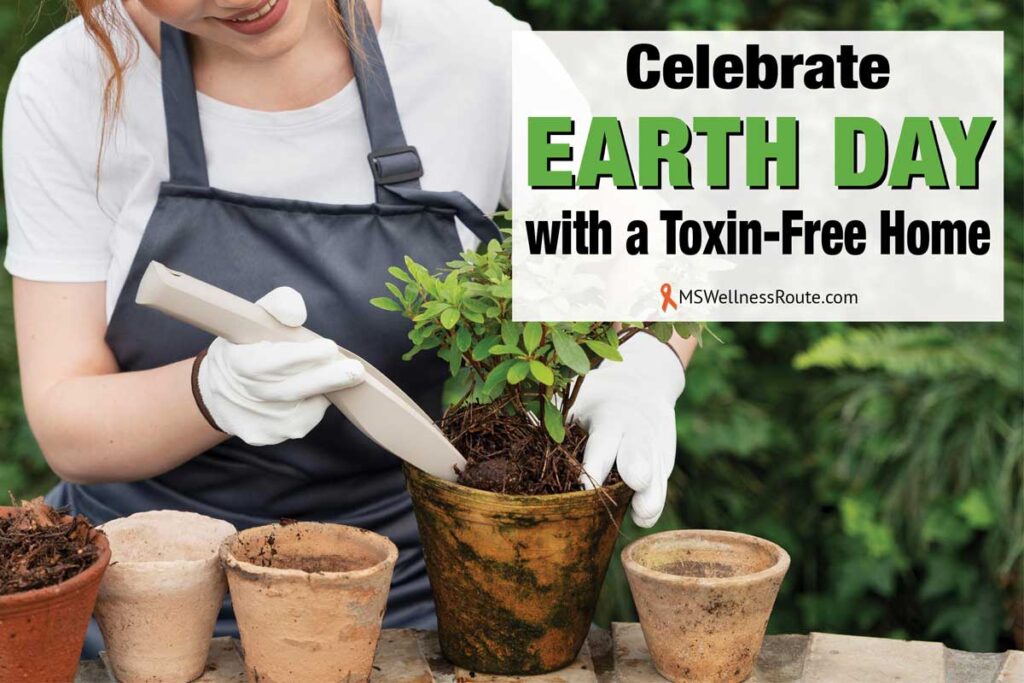
Earth Day is an annual event celebrated on April 22nd. It raises awareness about environmental issues and promotes actions to protect the planet. It is now observed in more than 190 countries worldwide.
Senator Gaylord Nelson proposed the idea for Earth Day. He wanted to create a national day to focus on environmental education and activism. The first Earth Day, in 1970, was a huge success. Millions of Americans took part in rallies, protests, and educational events.
Today, Earth Day is an important platform for environmental advocacy and activism. Earth Day celebrates the natural world. It also raises awareness about climate change, deforestation, pollution, and endangered species. It’s also a platform for launching new environmental initiatives and highlighting existing campaigns.
Earth Day isn’t only an awareness of toxins around the world. Earth Day is also an awareness for a toxin-free home.
Smoking and MS

In the U.S., more people say protecting the Earth is a priority. There have been some improvements to the Earth’s pollution and inside people’s homes. When I was growing up people kept ashtrays in their homes. Not because they smoked but for guests that came over and smoked.
People also smoked inside buildings, even at doctors’ offices. I’m not a smoker and never have been. The office I used to work in was small and full of smoke. Once, someone ridiculed me after I complained about the smoke.
Smoke from cigarettes is not healthy. Not only does it cause diseases but it has heavy metals which is a risk factor for multiple sclerosis (MS).
Smoking causes:
- Cancer
- Chronic bronchitis
- Chronic obstructive pulmonary disease (COPD)
- Emphysema
- Heart disease
- Lung diseases
- Stroke
- Type 2 diabetes
Smoking is also a risk factor for MS. Studies showed that MS risk increased by about 50%. If you smoke and have MS, you’ll tend to have more flares. Smoking causes MS to progress faster, if you smoke you need to stop.
Fortunately, authorities ban smoking in public buildings today. And, fewer people smoke today compared to 20 years ago. However, in the past few years, smoking has increased worldwide in young adults. This Earth Day be aware of smoke around your home. It could come from barbecues, candles, nearby fires, and secondhand smoke.
Toxins and Multiple Sclerosis
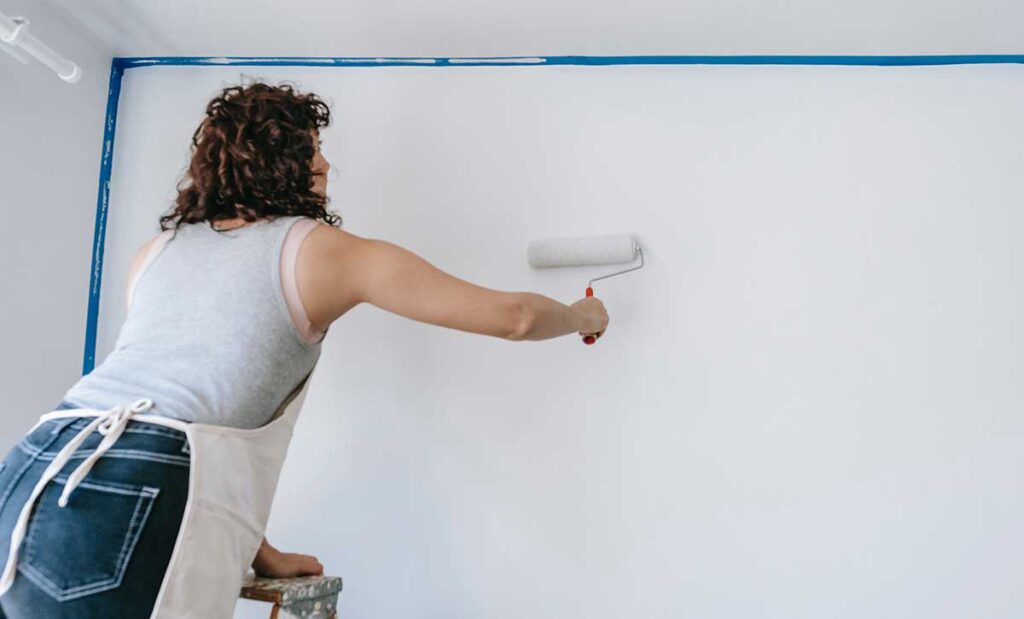
There’s been an increase in the use of certain chemicals and pollutants over the past few decades. These substances can have harmful effects on our health and the environment. Exposure to them increases the risk of various health problems including MS.
Studies found Epstein-Barr virus (EBV) is the main cause of MS. However, EBV is not the only factor. Environmental toxins are also a factor.
Toxins that affect MS:
- Heavy metals
- Mold
- Pesticides
- Toxic chemicals
You may not be aware of the environmental issues inside your home. It may surprise you to find out how many toxins are in your home that can slow down your healing process. You can’t always avoid or eliminate these toxins. Just make the best choices you can.
- Industrial chemicals. Industrial chemicals can be present in your home in a variety of forms, including in cleaning products, building materials, furniture, and electronics. Exposure to these chemicals can cause serious health problems, such as cancer, neurological damage, and reproductive issues.
- Mold. Exposure to mold can cause a range of health problems. Some types of mold can produce mycotoxins, which are toxic substances that can cause serious health problems. Mycotoxins have been linked to neurological problems, cancer, and other serious health issues.
- New carpets. New carpets can contain toxins, such as volatile organic compounds (VOCs) and flame retardants. Choose low-VOC or no-VOC carpets, and vacuum frequently to remove dust and dirt. Avoid carpet padding with flame retardants.
- Paint. Paint can release toxins in the form of volatile organic compounds (VOCs) into the air. Choose low-VOC or no-VOC paint and ventilate the area when painting. When disposing of old paint, make sure to follow local regulations and dispose of it properly, as it can be hazardous waste.
- Water. Water can have toxins in it, depending on the source and treatment of the water. Chlorine is often used to treat water to kill bacteria and viruses. Lead can enter the water through old pipes and plumbing fixtures. Pesticides and herbicides can leach into water sources from agricultural runoff.
Toxins in the Air, Food, and Water

It’s impossible to avoid all toxins because they are everywhere. They are in our air, food, and water. We are even born with toxins passed down from previous generations.
- Air. Air pollution includes toxins from transportation, agriculture, smoke, or burning candles. I have an AirDoctor, which helps to remove mycotoxins.
- Food. Agriculture practices can leave toxins on the food we consume. Some foods can naturally contain mycotoxins or mercury. Buy organic as much as possible. If you can’t afford organic only buy organic if it’s on the Dirty Dozen list.
- Water. Drinking water can contain contaminants such as heavy metals, pesticides, and other chemicals. Tap water contains chemicals and old water pipes can have lead. Use a water filter, I own a PUR Large Filtered Water Dispenser.
Having MS means toxins overloaded your body. Be aware of potential sources of toxins and take steps to reduce your exposure. Choose clean water, reduce air pollution, and opt for chemical-free food.
Mercury
Mercury is a neurotoxin and it passes down from generation to generation. People in the past used mercury for medicinal purposes. High levels of mercury exposure to your ancestors result in your birth with it.
Mercury is also in food such as mackerel, shark, and tuna. Beans, rice, vegetable oil, and wine are other possible sources of mercury. Mercury is also used in common products you may have in your home.
Common products that contain mercury:
- Antiques such as clock pendulums, mirrors, vases, and organs
- Automotive parts manufactured before 2003 may contain mercury switches or relays
- Barometers
- Batteries
- Dental amalgam (silver fillings)
- Electronics in LCD screens and monitors and TV’s made before 1991
- Jewelry (mostly imported from Mexico)
- Fluorescent light bulbs, ultraviolet lamps, and neon lights
- Medical equipment and pharmaceuticals
- Older appliances such as dryers, chest freezers, and space heaters
- Skin creams imported from other countries may have mercury
- Sporting equipment such as archery bows, and switches in fishing tips
- Thermometers and thermostats
- Vaccines, some flu vaccines have thimerosal, a mercury-based preservative
Toxins Cause Neurological Damage
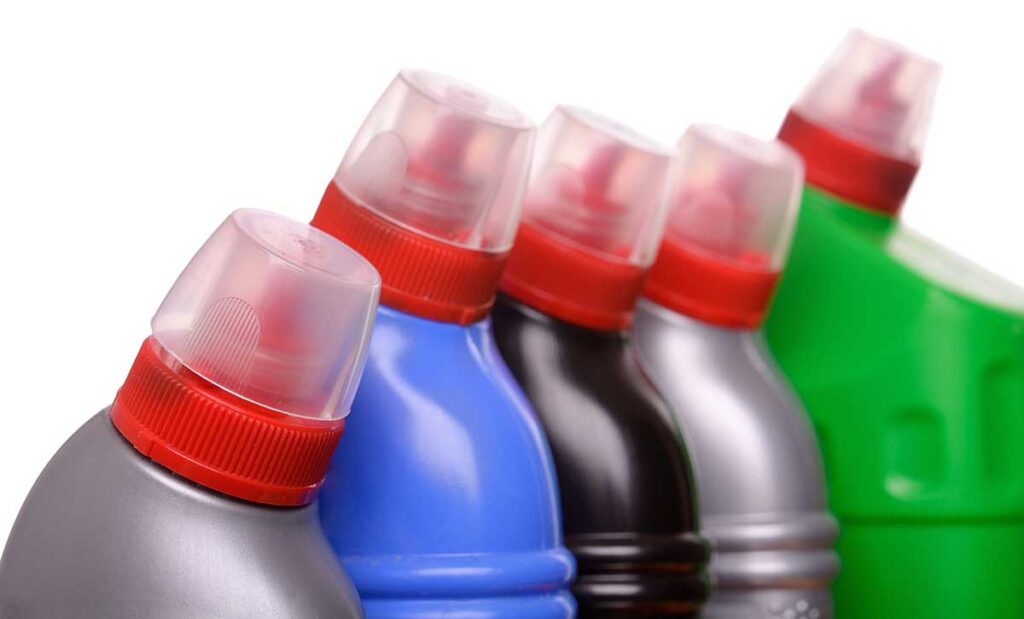
Some toxins have the potential to cause neurological damage. The nervous system is particularly vulnerable to toxic substances. Specialized cells and chemicals transmit signals throughout the body.
The contrast in MRIs contains gadolinium which is a heavy metal. If you get an MRI with contrast, drink more water afterward to flush it out. The FDA released an announcement in 2017 that stated:
“The U.S. Food and Drug Administration (FDA) is requiring a new class warning and other safety measures for all gadolinium-based contrast agents (GBCAs) for magnetic resonance imaging (MRI) concerning gadolinium remaining in patients’ bodies, including the brain, for months to years after receiving these drugs.”
Toxins that cause neurological damage include:
- Certain drugs such as antidepressants and chemotherapy drugs
- Heavy metals like lead and mercury
- Pesticides and herbicides
- Solvents
These substances disrupt nerve cell function and signal transmission. Exposure to these toxins can lead to a range of neurological symptoms and disorders. Symptoms can include memory problems, movement disorders, seizures, and coma or death. It’s important to be aware and to take steps to reduce your exposure.
Eat foods that remove heavy metals such as:
- Atlantic dulse
- Barley grass juice powder (it’s gluten-free)
- Cilantro
- Garlic
- Lemon
- Spirulina
- Wild blueberries (you can find these in the frozen section of many grocery stores)
Ways To Avoid Toxins Around Your Home
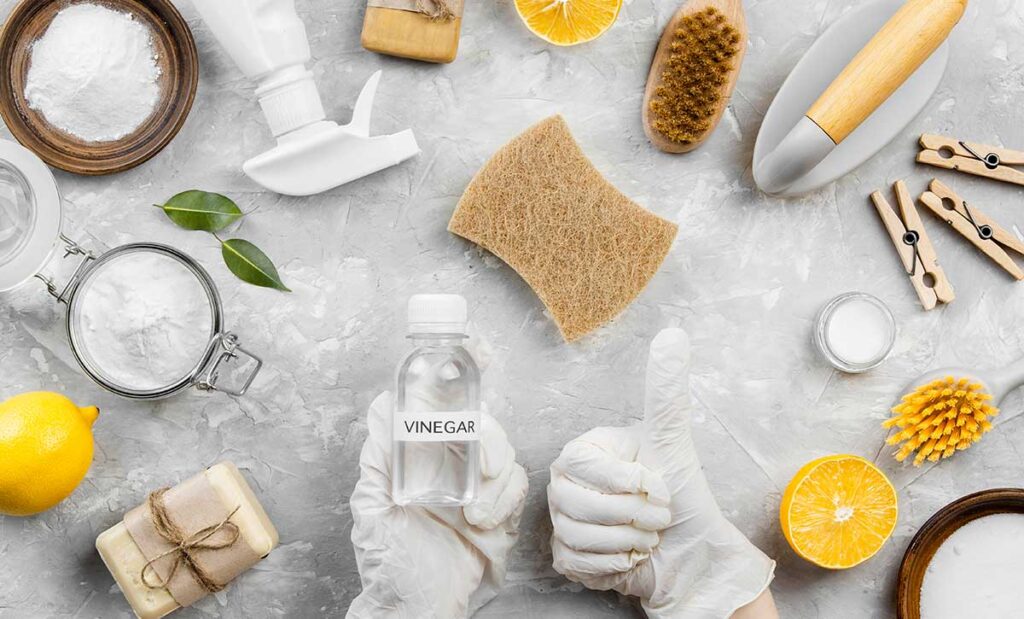
There are several steps you can take to avoid toxins in and around your home. Here are some easy ways to start:
- Avoid pesticides. Pesticides can be harmful to human health and the environment. When you use pesticides you not only kill the bad bugs you also kill the good bugs. Consider using natural pest control methods such as traps or companion planting.
- Avoid using synthetic fragrances. Synthetic fragrances in air fresheners, candles, and other products can contain harmful chemicals. Consider using natural alternatives such as essential oils or diffusing herbs.
- Choose organic foods. Conventionally grown fruits and vegetables can contain pesticide residues. Consider choosing organic options or washing produce thoroughly before consuming.
- Filter your water. Drinking water can contain contaminants such as lead, chlorine, and pesticides. Use a water filtration system or drink reputable bottled water.
- Improve indoor air quality. Indoor air can contain dust, mold, and household chemical pollutants. Consider using an air purifier or opening windows to improve ventilation.
- Test for radon. Radon, a naturally occurring radioactive gas, can cause lung cancer in homes. Test your home for radon and take steps to mitigate any problems.
- Reduce plastic use. Plastics can contain harmful chemicals such as phthalates and bisphenol A (BPA). Reduce plastic use by choosing reusable glass or stainless-steel bags, bottles, and containers.
- Use natural cleaning products. Many conventional cleaning products contain harmful chemicals. Consider using natural alternatives such as vinegar, baking soda, or plant-based cleaners.
- Use natural personal care products. Many personal care products, such as shampoo, soap, and lotion, contain harmful chemicals. Consider choosing products made with natural ingredients.
Celebrate Earth Day with a Toxin-Free Home
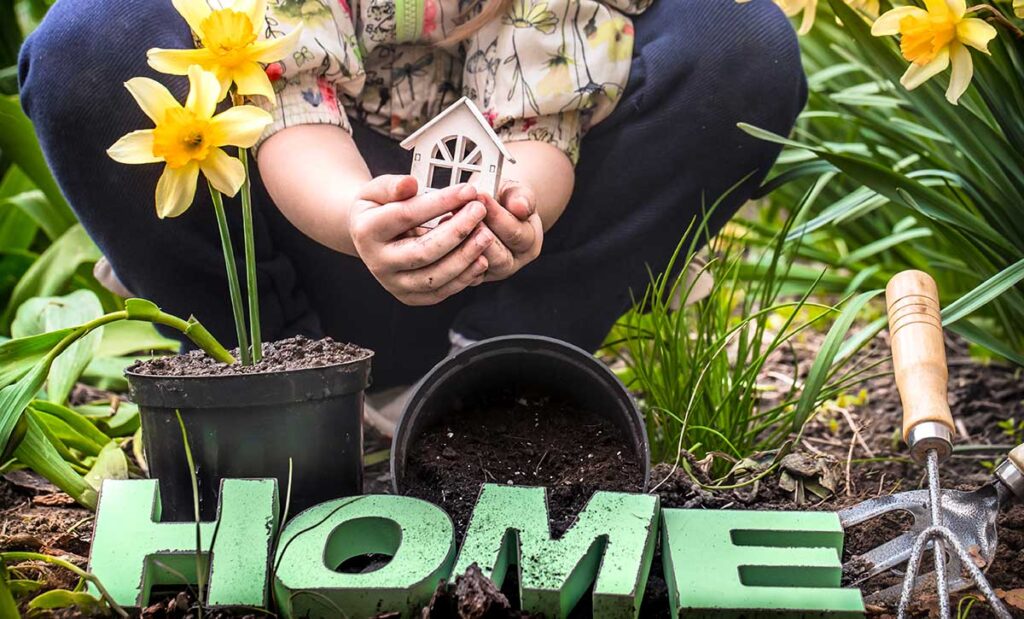
Earth Day, is a perfect time to focus on reducing toxins in your home and promoting a healthier living environment. You can take these steps to celebrate Earth Day and make your home safer for you and your family. Make informed choices for home products and materials to reduce your toxin exposure. By taking these steps, you can celebrate Earth Day and create a healthier home for you and your loved ones.
EBV and environmental factors such as toxins cause MS. Reduce your exposure in and around your home every day not only on Earth Day. By taking these steps, you can reduce exposure to toxins in your home. Also, eat a clean diet, drink plenty of water, and exercise. You’ll also improve your health.
Take steps to avoid toxins such as:
- Avoiding harmful chemicals
- Drinking clean filtered water
- Eating a clean, healthy diet
- Living in a clean environment
- Stop smoking
- Use air filters in your home
On Earth Day, we can all do our part to help the planet by making small changes in our daily routines at home. For example, switching to clean household products is a way we can contribute to the Earth Day cause, as it reduces the number of harmful chemicals that end up in the environment.
Quick Links To Information In This Post:
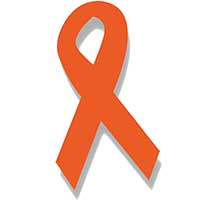
Free Wellness Library!
Subscribe for free and I’ll send you the password to my secret library filled with many printables for your wellness journey.
Want to remember this health tip? Pin it to your Pinterest board!
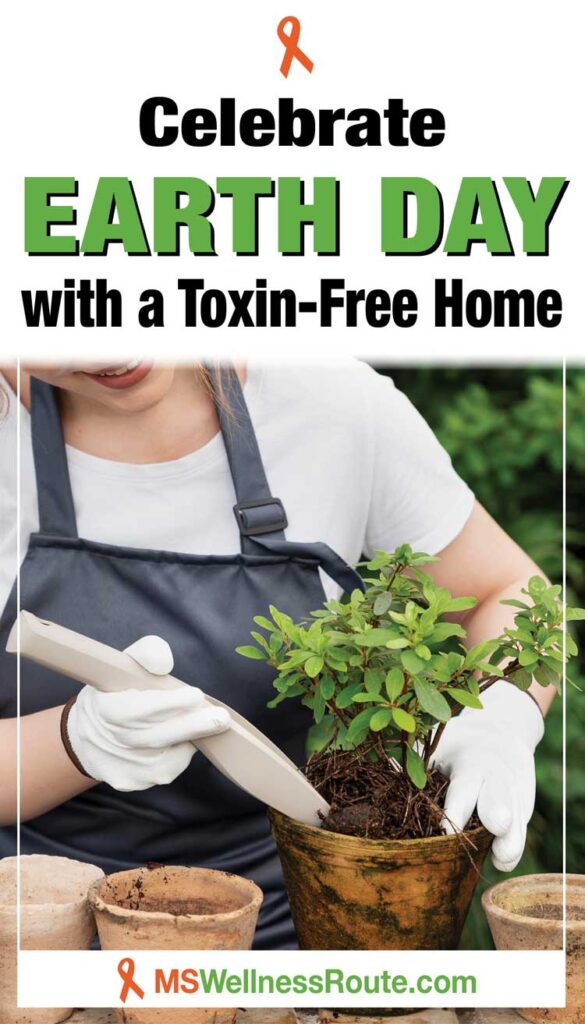
Image by Freepik and pvproductions on Freepik, Blue Bird: on Pexels, and Dmitriy and Thiago de Paula Oliveira from Pixabay
Resources:
https://news.wsu.edu/press-release/2017/05/03/toxic-effects-mercury-exposure
https://www.ncbi.nlm.nih.gov/pmc/articles/PMC5295343/
https://www.epa.gov/mercury/mercury-consumer-products
https://www.ncbi.nlm.nih.gov/pmc/articles/PMC7183423/
https://hsc.unm.edu/news/2022/02/doctor-researches-toxic-side-effects-rare-earth-metals-mri.html
Celebrate Earth Day with a Toxin-Free Home





